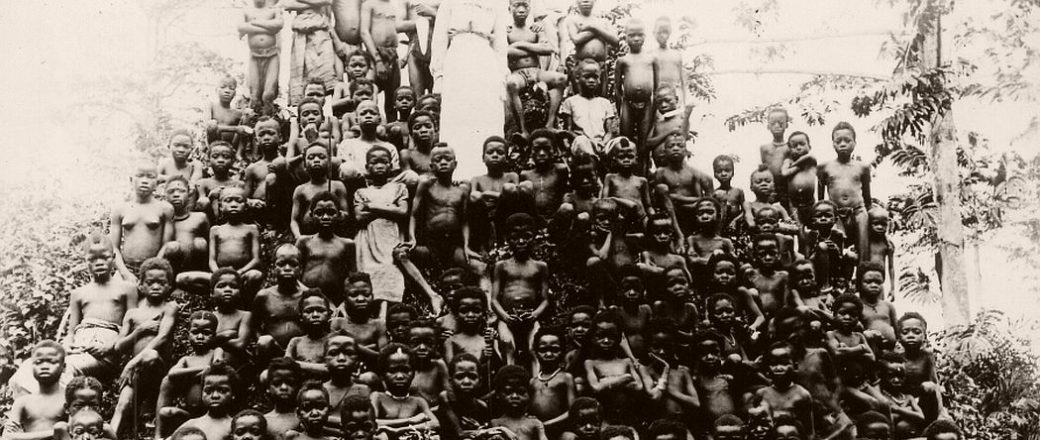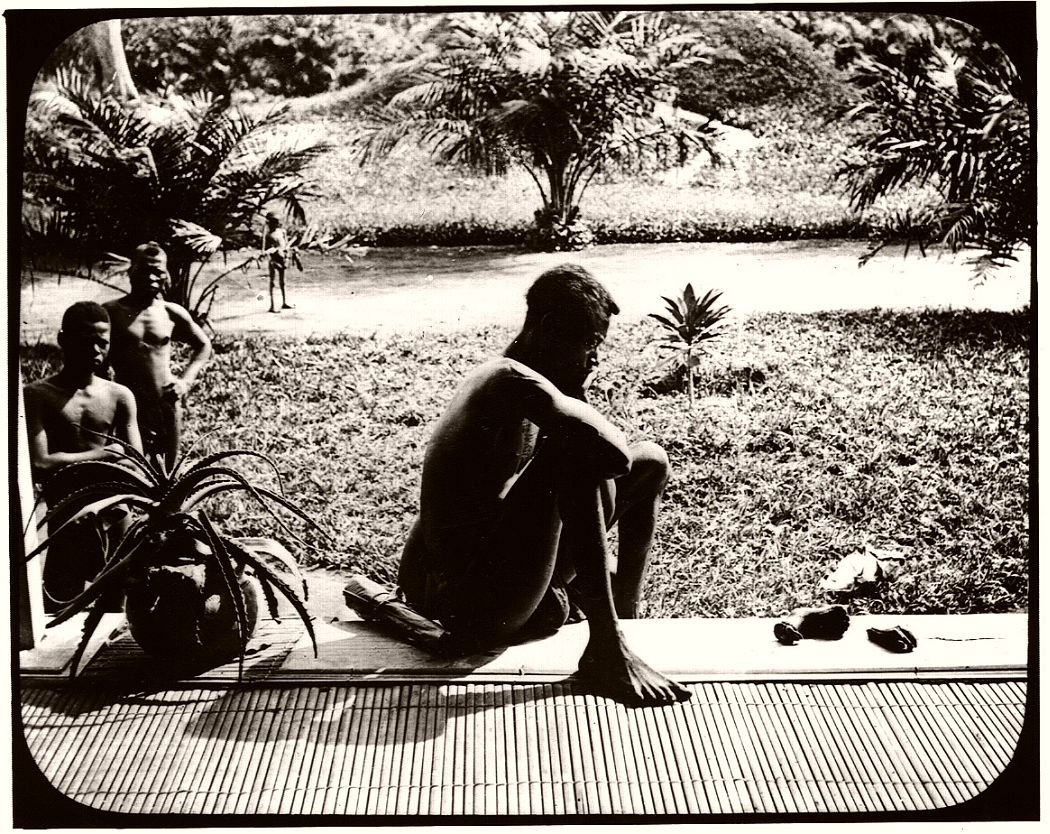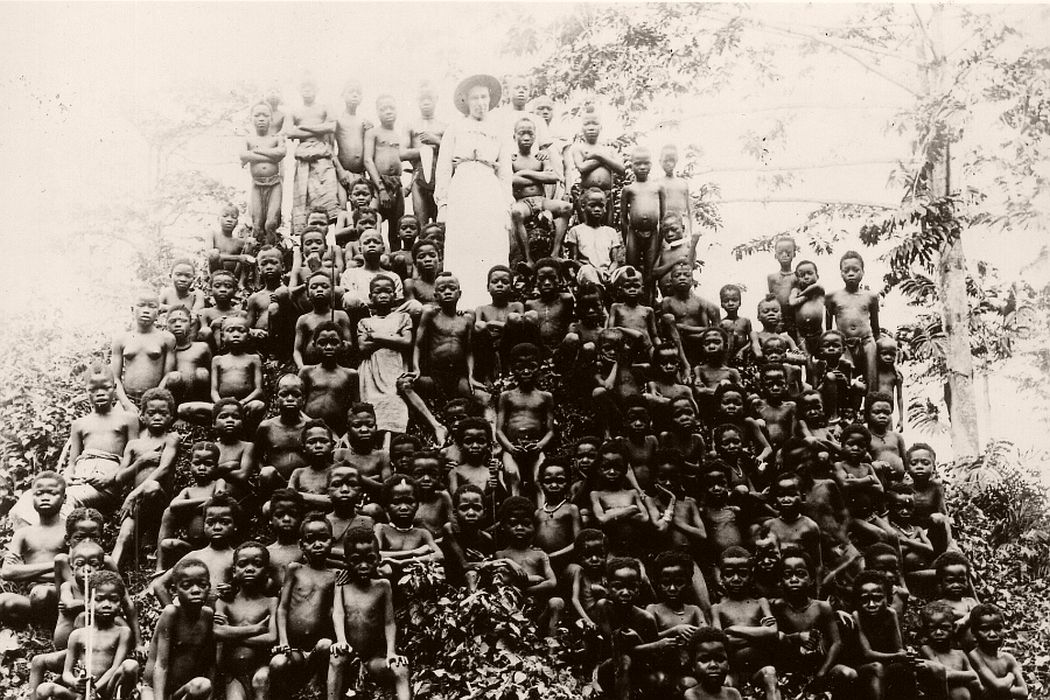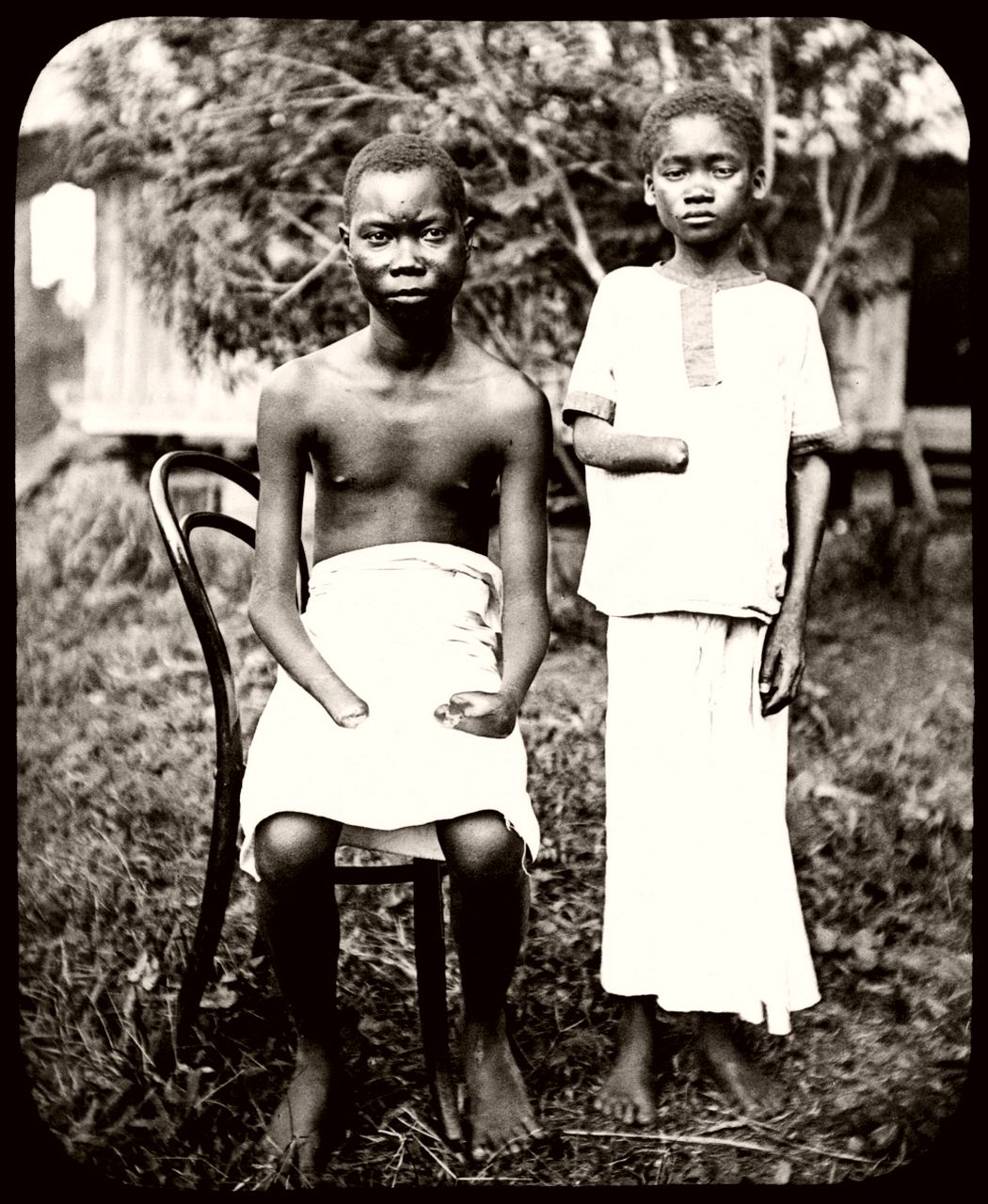Alice Seeley Harris (1870–1970) was an English missionary and an early documentary photographer. Her photography helped to expose the human rights abuses in the Congo Free State under the regime of Leopold II, King of the Belgians.
In 1889, aged 19 yrs, Alice entered the Civil Service and was later appointed to the Accountant General’s office in GPO London. Alice gave her spare time to Frederick Brotherton Meyer’s mission work at Regent’s Park Chapel and later Christ Church, in Lambeth.
Alice left the Civil Service to enter Doric Lodge, the RBMU’s (Region Beyond Missionary Union, previously the Congo Balolo Mission) Missionary Training College and in 1894, met her future husband John Hobbis Harris. Finally in 1897, after seven years of trying, Alice was accepted to go out to the Congo Free State. Shortly afterwards, Alice and John got engaged and were married on 6 May 1898.
On the 10 May 1898, Alice and John departed on the SS Cameroon to the Congo Free State as missionaries with the Congo-Balolo Mission, it was to be her ‘honeymoon’. They arrived in the Congo three months later, on the 4 August 1898, and then travelled to the Mission Station Ikau near Basankusu.
Alice was appalled and saddened at what she witnessed in the so-called Congo Free State, and began campaigning for the human rights of the Congolese natives to be recognised.
Campaigner
Tinted lantern slide titled “The Congo Atrocities” showing a mutilated young woman (part of a set by Alice Seely Harris, who with her husband John Harris used these slides in magic lantern shows across the country to bring the injustices against Congolese workers to public attention.)
Alice was stationed with her husband John from 1898 – 1901 at the Mission Station at Ikau. Ikau is located near the River Lulanga, which is a tributary of the River Congo in the Balolo Tribal region. Later, from 1901 – 1905, they were stationed at the Mission Station at Baringa, a village in Tshuapa District, Befale Territory in what is now the Democratic Republic of the Congo. It stands on the banks of the Maringa River, approximately 100 km upriver from Basankusu.
During her time in the Congo, Alice taught English to the local children, but her most important contribution was to photograph the injuries that were sustained by the Congolese natives at the hands of the agents and soldiers of King Leopold II of Belgium. Leopold was partly exploiting the local population so fiercely to profit from increased rubber demand after the invention of the pneumatic or inflatable tire by John Boyd Dunlop in Belfast in 1887. Methods of coercion included whipping, hostage-taking, rape and murder, and burning of gardens and villages.
The most famous and shocking atrocity, whose aftermath Harris captured in her photography was the severing of hands. In 1904 two men arrived at their mission from a village attacked by ‘sentries’ of the Anglo-Belgian India Rubber Company (ABIR) after failing to provide the required rubber quota. One of the men, Nsala, was holding a small bundle of leaves which when opened revealed the severed hand and foot of a child. Sentries had killed and mutilated Nsala’s wife and daughter. Appalled, Alice persuaded Nsala to pose with his child’s remains on the veranda of her home for a picture.
Initially Alice’s photographs were used in Regions Beyond, the magazine of the Congo Balolo Mission. In 1902, the pair returned to Britain temporarily. In 1904 Alice’s photographs reached wider distribution including inside a pamphlet titled Congo Slavery that was prepared by Mrs. H. Grattan-Guinness, wife of the editor of Regions Beyond and in King Leopold’s rule in Africa by E. D. Morel. The same year saw the founding of the Congo Reform Association by Morel.
In early 1906, Alice and her husband toured the United States. John wrote that they had presented her images at 200 meetings in 49 cities via magic lantern screenings.
In 1906 Alice and her husband began working for Morel’s Congo Reform Association.
In December 1906 the daily paper New York American used Harris’s photographs to illustrate articles on atrocities in the Congo for an entire week.
In 1908, Alice and John became joint organizing secretaries of the Congo Reform Association and, in April 1910, they became joint organizing secretaries of the Anti-Slavery and Aborigines’ Protection Society. Alice soon relinquished her official position, but assisted John at the Society until his death in 1940. She continued her very active speaking career and was listed with Christy’s Lecture Service alongside luminaries such as Winston Churchill and Ernest Shackleton.
In November 1908 Leopold ceded administration of the Congo Free State to the Belgian government, thus creating the Belgian Congo.
The pair returned to the Congo from 1911–12, following the 1908 handover of the Congo to Belgium by King Leopold II. They noted improved conditions in the treatment of natives and later produced a book, Present Conditions in the Congo, illustrated with Alice’s photographs. Soon thereafter, hundreds of Alice’s African documentary photographs were displayed at an exhibition at the Colonial Institution.
In 1933, Alice’s husband John was knighted for his services to humanity and Alice became Lady Alice, but was known for saying “…don’t call me Lady!” Some commentators think that Alice should have received an honour for her services, in her own right, in being one of the first people to use photography in a human rights campaign.
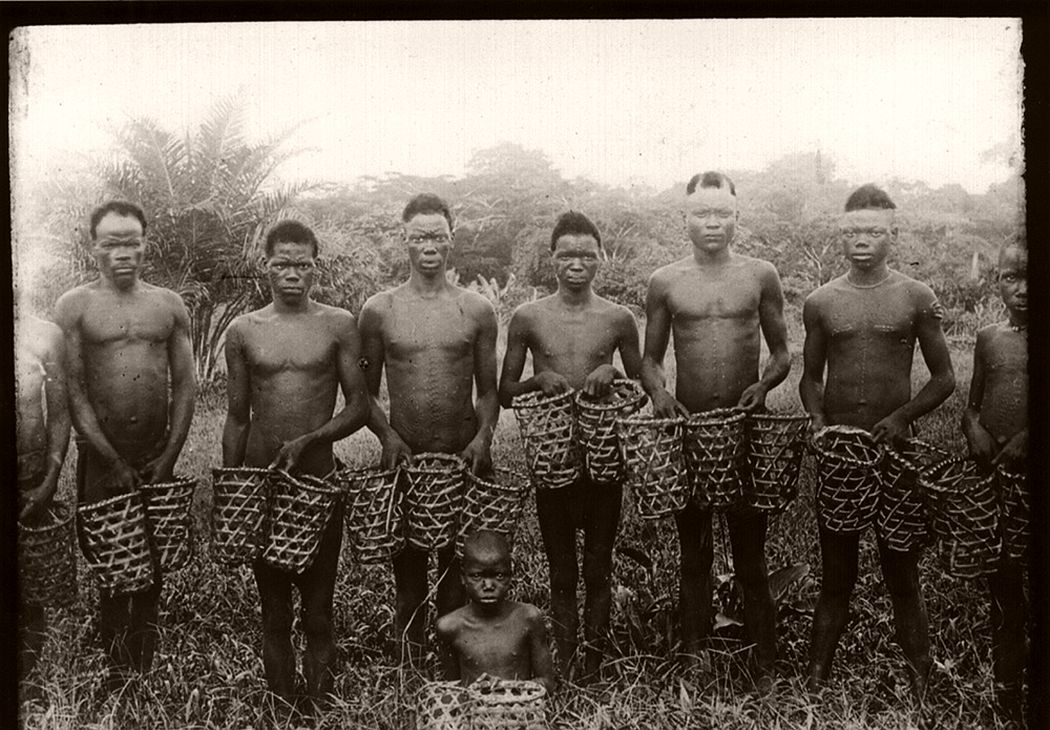
A group of Bongwonga rubber workers. Photo by Alice Seeley Harris. Copyright Anti-Slavery International and Autograph ABP.
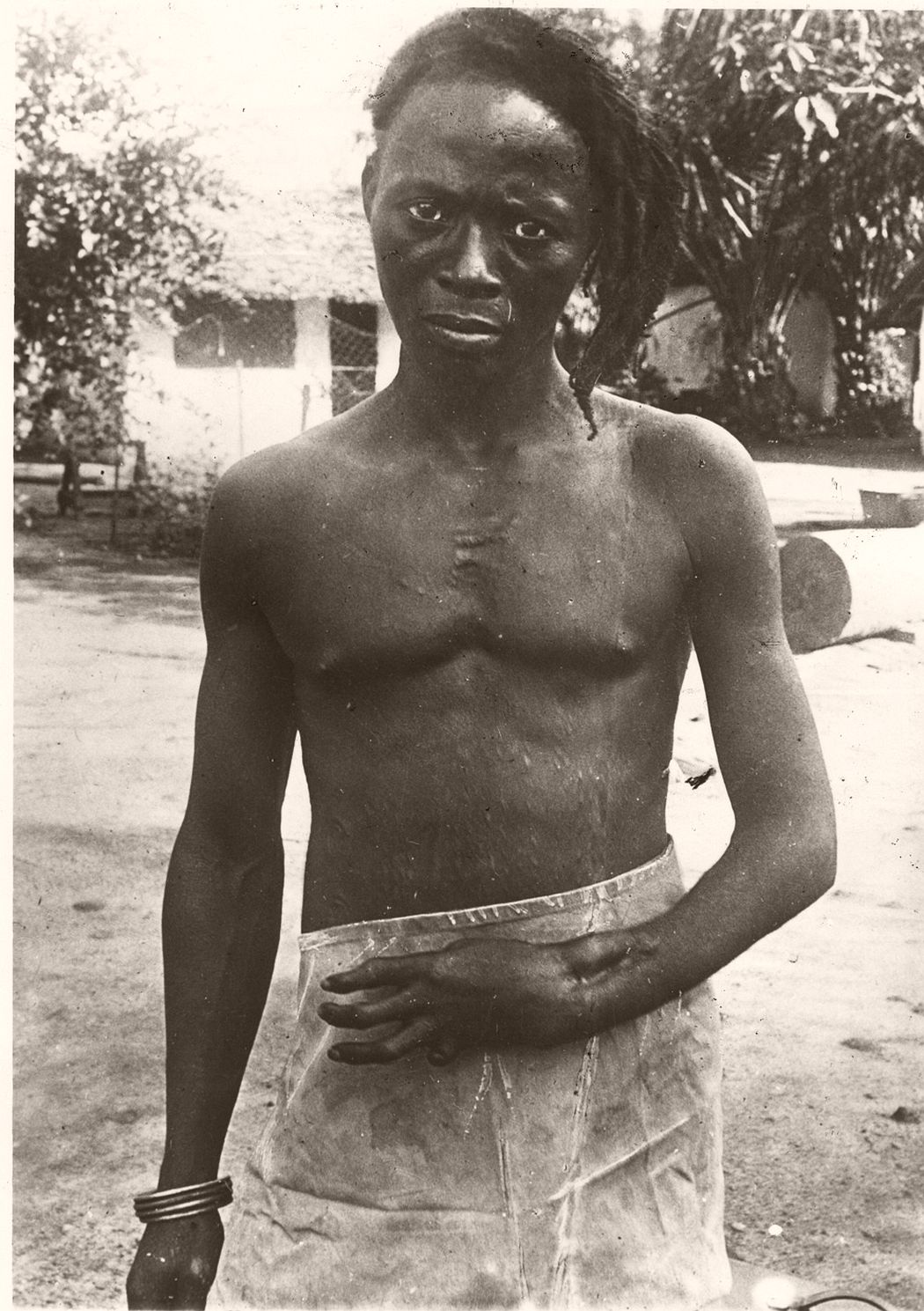
Lomboto shot in wrist and hand by a rubber concession sentry and permanently disabled as a result, early 1900s copy. Copyright Anti-Slavery International and Autograph ABP.

